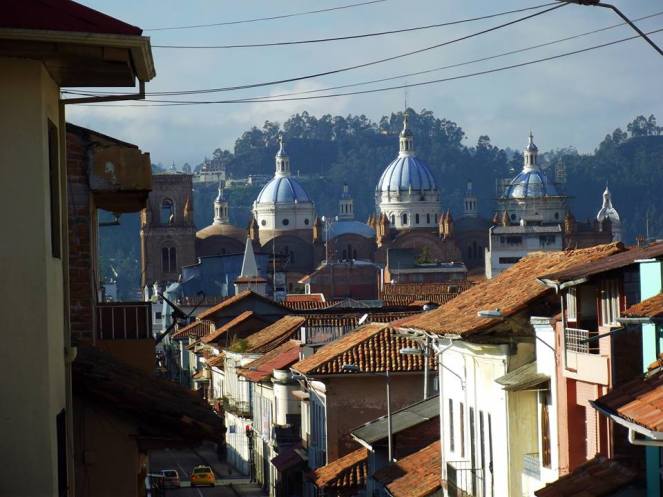When it comes to Ecuador, the sierra and coast are very different and could almost be different countries in themselves. Yet Cuenca, despite being a city in the sierra, is visibly different from most if not all Ecuadorian cities.
Situated in the southern sierra of the country and only 3 to 4 hours from my site in Guayaquil, Cuenca is the third largest city in Ecuador. With a population of roughly 700,000 it is dwarfed by Quito and Guayaquil‘s populations of several millions. With its size however, Cuenca is able to implement many things that the two other larger cities can not. For one it is much cleaner even than other cities in the sierra, which already have a reputation for cleanliness.

A large percentage of the population is comprised of foreigners from Europe, the U.S. and other parts of Latin America which inherently gives Cuenca a much different character. It is easy to find Thai, Italian, Spanish, Chinese and many other foreign foods within close proximity of local Ecuadorian food. The large population of indigenous people of both Cañari and Incan descent help to add more diversity to the city which is reflected in traditional foods such as cuy (guinea pig) as well as the Andean music that is played during city celebrations.
Much of Cuenca‘s architecture retains its colonial characteristics from the Spanish period following the conquest of the city of Tomebamba (the second capital of the Inca Empire) in 1557. Following independence on November 3, 1820 the city became one of the primary centers of importance in the nascent Republic of Ecuador. It’s retention of traditional architecture has won it international recognition, including being listed as a UNESCO World Heritage Site. Most impressive among its many awe-inspiring buildings and avenues is the large Cathedral of Cuenca which mixes several architectural styles including Romanesque Revival in it’s large twin-towers and a Neo-Gothic style in both interior and exterior; it’s three large blue domes reflect old Byzantine architecture.

On November 3rd, 2017 I visited the city on the day of its 197th anniversary of independence and witnessed some of the unique celebrations; this included a parade of candidates for chola cuencana (a sort of variation on city queen) with girls adorned in traditional Andean clothing and hundreds of people dancing to the rhythm of indigenous dance. This was followed by a military parade by the Ecuadorian Army’s Tarqui Division, fully equipped in ceremonial uniforms and Prussian spike helmets, commemorating the fight for independence. In the nighttime people went out for dancing or to simply relax and enjoy the music in the open air concerts both at the city stadium and in the park opposite the cathedral. My friends and I also enjoyed walking along one of Cuenca‘s four scenic rivers and perusing the handiwork of folk arts such as basket weaving, Panama hat making and alpaca wool clothing. Finally one of the best parts of the city was the 2nd annual gastronomic festival that also was occurring at this time. It was here that all sorts of artisanal foods and a delicious diversity of both local and foreign foods could be found. For someone like me who loves food, it was almost a dream come true.

While my time in Cuenca was brief, I walked enough to see much of the city and overall made the most of my time there. It left a deep and positive impression on me and I can’t wait to return soon.




3 thoughts on “Cuenca: A world all its own”